This article is more than 1 year old
BMW i8 plug-in hybrid: It's a supercar, Jim, but not as we know it
Vroom-vroom, sort of
Review I almost felt sorry for the BMW press team last November at the i3 press launch. The questions hacks kept returning to were: “When is the i8 going on sale?” and “When can we drive it?”. Fair play to the BMW staffers, who didn't stop telling us how groundbreaking and generally fantastic the i3 was. As indeed it is.
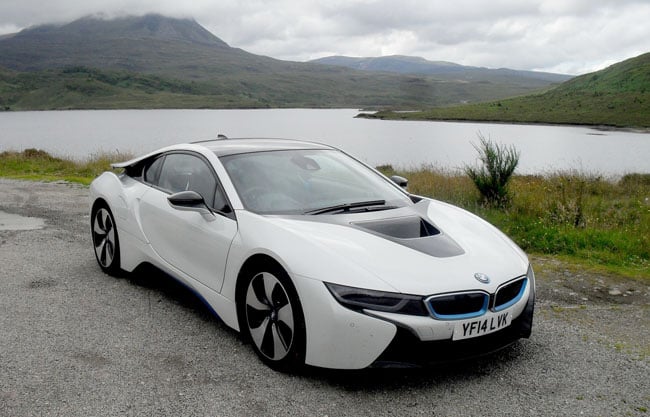
Spark and ride: BMW's i8 plug-in hybrid sports car
But at last, we do have answers to those two questions: Saturday 19 July and last week respectively. Yes, The Register has spent a day charging around Scotland in the BMW i8 and if you have £95,000 burning a hole in your pocket, you can trot down to one of the UK’s 43 BMW i outlets and get yourself on the waiting list.
What do your 95 large ones get you? A wet dream of a supercar made from aluminium, carbon fibre and fancy plastics powered by a 231bhp 1.5L 3-cylinder turbocharged petrol engine at the back, and a 131bhp (98kW) electric motor at the front. Peak output for the combined system is 362bhp (270kW) and 570Nm (420lb-ft).
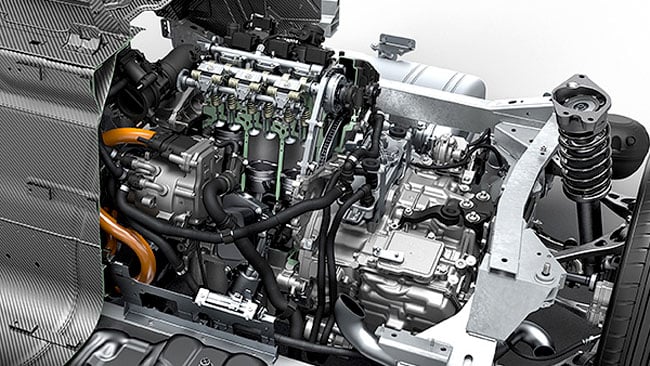
1.5-litre, three cylinder petrol engine cutaway
Between the two motors, mounted in the centre console, is a 96-cell lithium-ion battery delivering 7.1kWh, but that’s the gross figure – only 5.1kWh is available to the system. It can be recharged by either plugging it into a domestic power socket rated at up to 16 amps or using the petrol motor and recuperative braking system.
The basic construction of the BMW i8 follows the same pattern as the BMW i3, so there is an aluminium “drive module” that houses all the not-so-oily-bits. On top of this is the carbon fibre “life module”. The exterior, meanwhile, is the made from a mix of aluminium and carbon fibre-reinforced plastic.
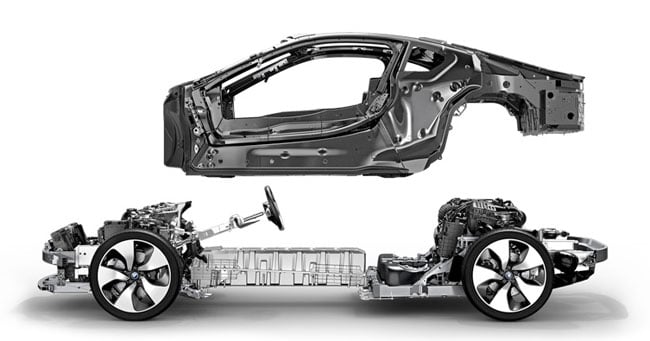
Barebones: the drive module and the life module
Thanks to that fancy-pants construction, the i8 weighs in at 1,490kg, of which 98kg is accounted for by the battery pack. That’s not bad for a hybrid and is about the same as a McLaren 12C, albeit 110kg heavier than a Ferrari 458.
From the outside, the i8 is nothing if not striking. It may not be quite as wild as the 2009 Vision Efficient Dynamics concept but the designers have come up with something which – if not what I’d describe as pretty – is certainly both dramatic and distinctive yet not straying too far from BMW’s current design language.
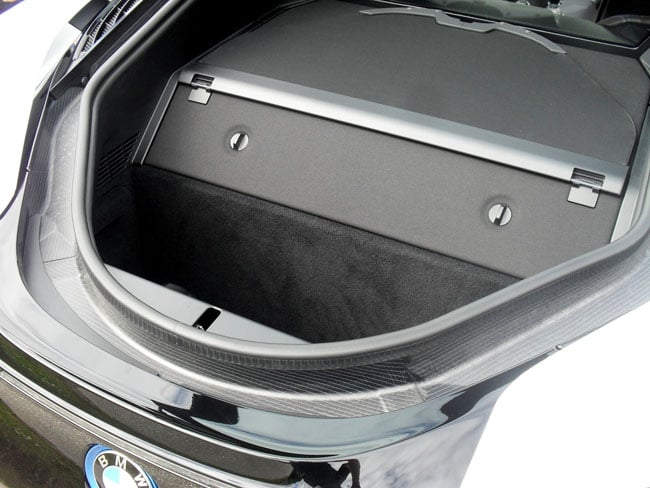
The boot is deep rather than particularly capacious
Though technically a 2+2, the rear seats are really useless for anything other than soft bags, groceries and small children, though not all at once. The boot under the rear hatch is deep and voluminous by supercar standards, but forget about getting a set of golf clubs or large items of luggage into it.
You may think it odd that I’m talking about practicalities – like rear seat space and luggage capacity – but the fact is the i8 is a surprisingly easy car to drive, just not to get into. Levering yourself under the dramatic dihedral doors and over the sizable sills is an art form in itself.
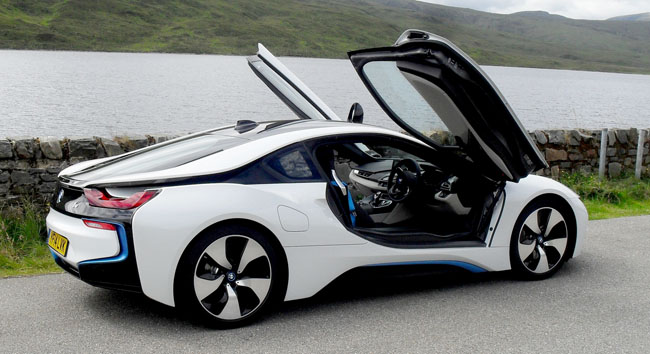
Nice doors but getting into the i8 is an acquired skill
Once ensconced in the comfortable cabin – which is nowhere near as radically future-Ikea in design as the i3’s – you can hit the Start/Stop button, slip it into Comfort mode and toddle off down to Tesco with no more drama that you would in a Nissan Micra. Except that the world+dog doesn’t stop and stare when you drive past in a Micra.
